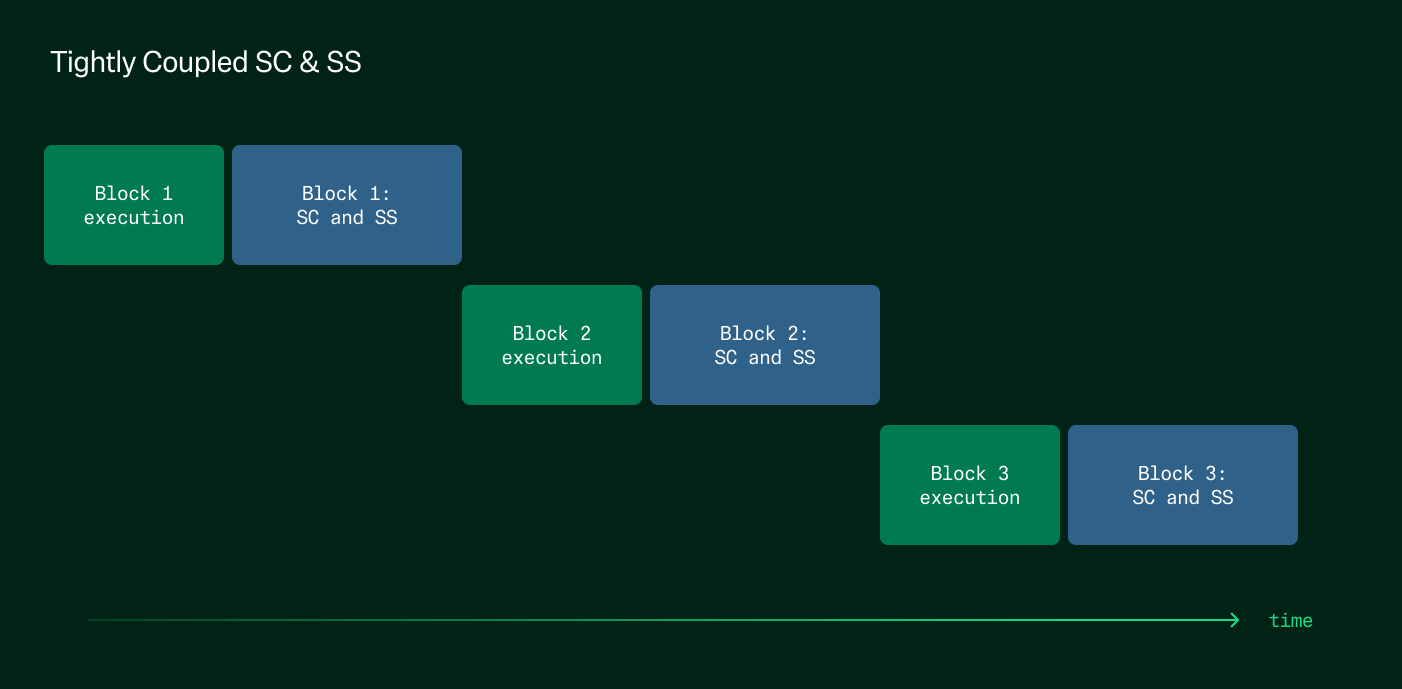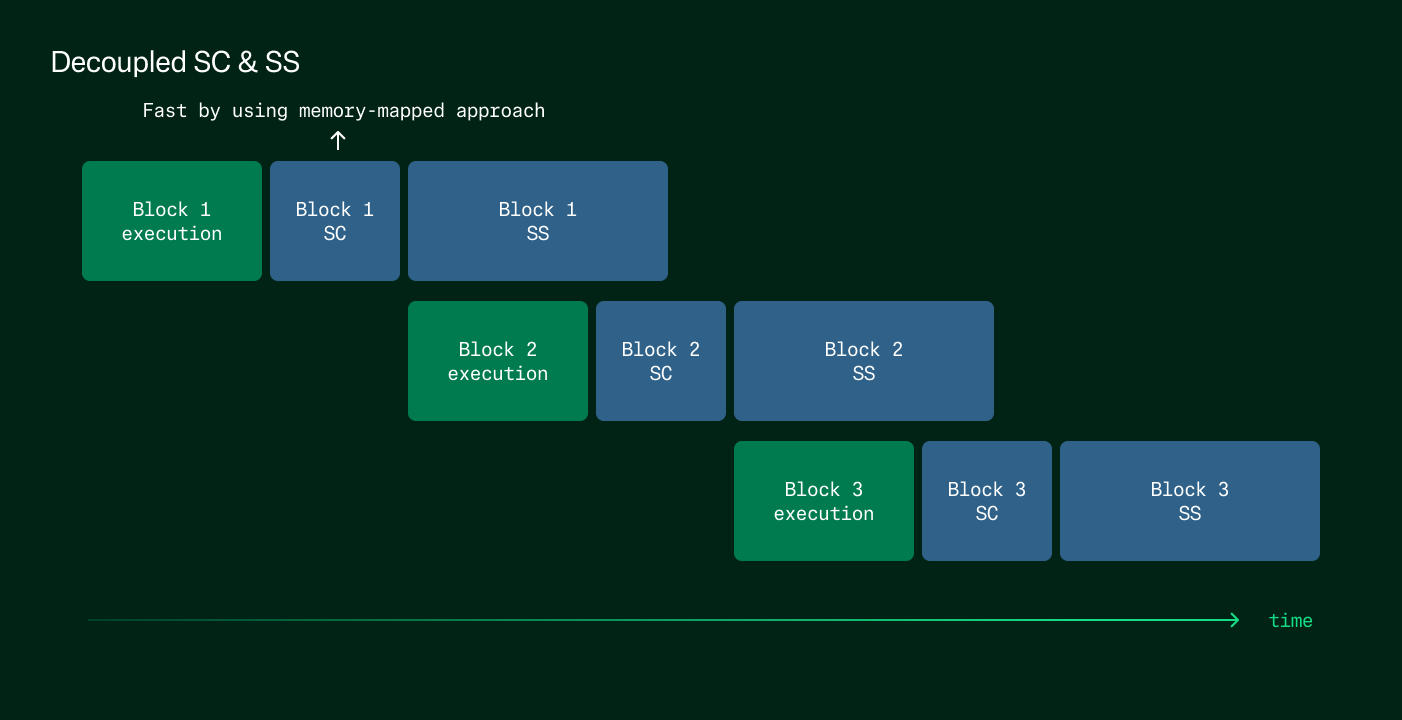Skip to main contentOne of the main bottlenecks of end-to-end performance of a blockchain lies in the realm of Disk I/O. More specifically, the operations involved in committing and storing state data after block execution are the key bottlenecks. Stable tackles this problem with architectural innovations such as MemDB, VersionDB, and memory-mapped storage (mmap) to dramatically improve its throughput.
Why Disk I/O Is a Bottleneck
State Transition and Persistence
Every time a block of transactions is executed, the blockchain transitions from one state to the next. This process has two fundamental stages:
- State Commitment: The new application state is committed after transaction execution.
- State Storage: The committed state is persisted to disk for long-term access and historical verification.
 In conventional architectures, state storage is tightly coupled with state commitment. This means that:
In conventional architectures, state storage is tightly coupled with state commitment. This means that:
- The node must wait for the new state to be fully stored on disk before proceeding with the next block’s execution.
- The state data is written in random disk locations that are not mapped to fixed addresses. This leads to high latency when retrieving state data during execution of subsequent transactions.
Even if consensus and execution layers are heavily optimized, this serialized dependency on slow disk operations caps the achievable performance of the entire system.
Optimizing DB Operations for Higher Throughput
To overcome these limitations, Stable proposes a two-fold architectural enhancement focused on decoupling state operations and introducing memory-mapped DB optimizations.
1. Decoupling State Commitment and Storage
 The first step is to decouple the state commitment from its storage:
The first step is to decouple the state commitment from its storage:
- After committing a new state, the node immediately proceeds to execute the next block.
- The actual persistence of state to disk occurs asynchronously in the background.
This separation allows execution to happen instantly and leapfrog the latency of slow disk writes, thereby eliminating blocking dependencies and eventually improving end-to-end performance.
2. Introducing MemDB and VersionDB via mmap
We enhance this with a dual-database model powered by mmap (memory-mapped file access):
- MemDB (Memory DB):
- Stores recent and active states that are frequently accessed.
- Uses fixed address mapping via
mmap, enabling fast and deterministic lookups.
- Ideal for most transaction workloads which target recently modified state.
- VersionDB (Historical DB):
- Stores older, historical states on disk.
- Optimized for archival and long-range queries, not for high-frequency access.
This design ensures that hot data is served from fast, memory-resident structures, while cold data is offloaded to slower, persistent storage. By combining mmap access with smart state tiering, Stable can significantly reduce the DB read/write latency during block execution.
Expected Gains and Precedents
This architectural optimization is not just theoretical. It is already being implemented by high-performance blockchains such as Sei and Cronos. Both have adopted similar decoupled architectures with memory-mapped DBs and have observed up to 2x increases in overall TPS.
Stable also anticipates comparable gains, as the architecture will no longer be bottlenecked by the storage layer. Instead, consensus and execution performance can scale without being throttled by disk operations.
Further Reading
For more technical deep-dives and implementation details, refer to:



